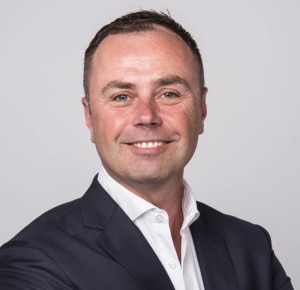
Once the beacon for digital publishing, BuzzFeed has faced redundancies globally and failed to hit its financial targets. HuffPost, Mashable and Vice have also experiences staff cuts.
It’s the first indication that digital media has lost its shine, which leads Fairfax’s chief revenue officer Matt Rowley to question if we’ve reached “peak internet” with marketers now beginning to recognise the publications offering the best value.
“One of the things that have become apparent in the move to Nielsen’s daily Digital Content Ratings (DCR) is that in the past, when it was only measured monthly, a publication could build up what looked like a decent audience over that time frame,” he says.
“But, DCR shows what Fairfax has is return consumers every day or week. If you measure it daily, you can shakeout those publications that don’t have a loyal audience or a habit-formed audience.”
While Rowley doesn’t see job cuts at competitors as a positive move in the industry, he does believe it highlights the ability Fairfax has to engage readers on a regular basis and the strength of legacy publishers coming back to the forefront.
“Five years ago you didn’t need 180 years history as a publisher to get into people’s lives. You could pop and game the algorithm and be in front of people for what was almost free but then suddenly organic reach was gone," he says.
“In some ways it’s a shakeout of the market realising where true value is. I don’t wish cuts on anyone or any organisation, but it’s great that people can rediscover where valued content lives.”
When asked if Rowley is concerned Fairfax could face a similar crash with its own digital titles, he says that the business isn’t complacent and is looking at ways to target new, younger audiences.
“Digital display is really challenged and we get that, which is why we launched new sites and new ad formats,” Rowley says, referencing the recent overhaul of The Brisbane Times and the introduction of four rich media ad units.
“If you have a business model that’s based on a 2009 internet I think you’re in trouble… The same goes for commercial partnerships if you’re basing your business on a model that worked five years ago.”
To overcome digital fatigue and future proof the business, Rowley restructured the commercial team away from teams dedicated to specific media agencies, instead basing them around core advertising verticals, like auto and retail. He bucked the trend of redudancies, instead adding new roles into the refreshed team.
Fairfax has also moved away from relying on Facebook for its audience, which has been a downfall for many digital publishers.
“Pureplays relied on social media to grow quickly and now, in a slightly different market, where it doesn’t come easy or free, the tide has gone out,” he says, adding that most of the businesses experiencing cuts based their models around organic reach on Facebook, which barely exists today.
While the jury is still out on the relationship between publishers and Facebook, Fairfax recently inked a deal with Google to sell and market programmatic advertising and drive subscriptions, showing publishers are warming up to the digital giant.
Have something to say on this? Share your views in the comments section below. Or if you have a news story or tip-off, drop us a line at adnews@yaffa.com.au
Sign up to the AdNews newsletter, like us on Facebook or follow us on Twitter for breaking stories and campaigns throughout the day.


